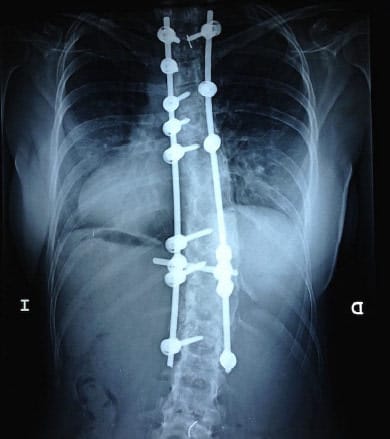Risk Factors And Complications Of ScoliosisPosted by abby smiths on November 6th, 2019 Scoliosis is an abnormal curving of the spine, which is also your backbone. It runs straight down your back. Even though the human spine naturally curves a little, but people with scoliosis have a spine that curves even more. And in this article, we will talk about the risk factors and complications from scoliosis. What are the risk factors for scoliosis? Some of the risk factors that have been identified with the most common type of scoliosis include: Age – Symptoms of scoliosis tend to start during a child’s growth spurt which also occurs just before puberty and typically between the ages of nine and 15. Gender – Girls tend to have a higher risk as compared to boys. While both genders tend to develop mild cases of scoliosis at roughly the same rate, girls will usually have a greater risk of spinal curvature progressing and may require more aggressive treatment. Family history – Scoliosis also appears to run in some families and having a family history with direct relatives affected by the condition increases one’s chances of developing it. What are the complications of scoliosis? Most people with scoliosis have a mild form of the condition with relatively few adverse effects, however, in some cases, the condition may also lead to certain complications, which may include: Heart and lung damage – When scoliosis gets severe, the rib cage may press against the heart and lungs. This will make it difficult to breathe and for the heart to pump, in return, damaging the lungs and heart. Back issues – If a person has scoliosis in his or her childhood, the chances of suffering from chronic back pain later in life are much higher. Appearance – When scoliosis progresses, it can result in visible changes to the body. For instance, the shoulders or hips may appear uneven, ribs may be prominent or a shift in the trunk and waist to one side may be evident. This usually results in the sufferer feeling self-conscious about their appearance. What effect does scoliosis have on the bones? Scoliosis has always been linked to osteopenia. This is a type of condition that is marked by a loss of bone mass, resulting in bone density is lower than normal, but not so low that the sufferer is diagnosed with osteoporosis. Adolescent girls who suffer from scoliosis may also be diagnosed with osteopenia. If left untreated, osteopenia may progress and develop into osteoporosis, a condition that affects the density of the bones and results in more severe loss of bone, eventually causing brittle bones that fracture easily. The disease is also commonly seen in postmenopausal women. Some people go for scoliosis Harrington rod surgery, but there are also scoliosis Harrington rod complications. Therefore, it is advisable to go for a non-surgical form of treatment. Author: The author is a blogger and the article talks about risk factors and complications of scoliosis. Like it? Share it!More by this author |



